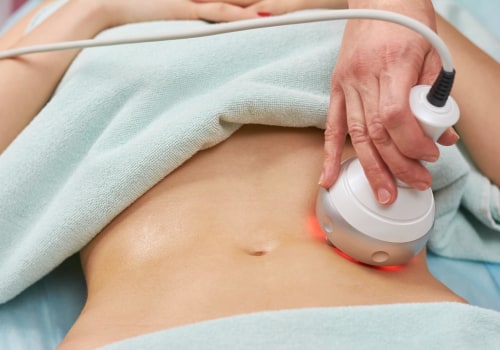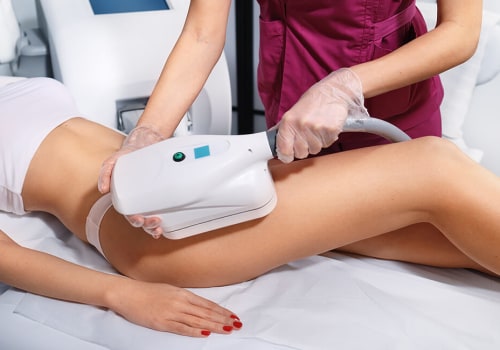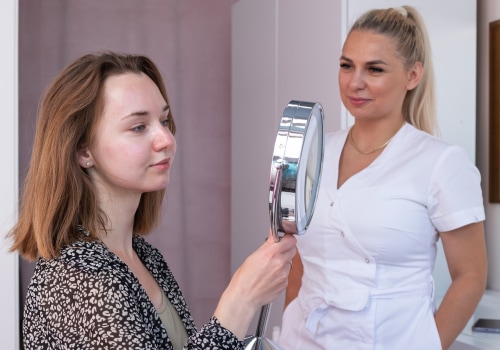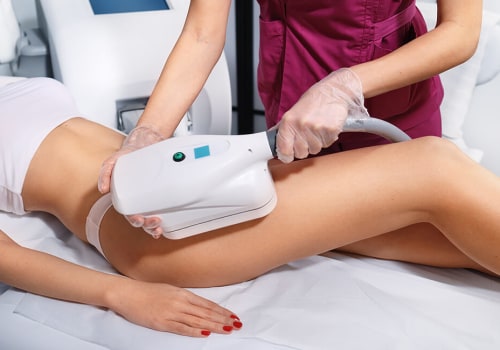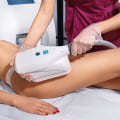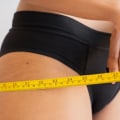Microneedling has long been recognized for its benefits in skin rejuvenation, but recent advancements have expanded its potential to include nonsurgical fat reduction. With the introduction of FDA-approved microneedling devices designed to target fat cells, this innovative approach is reshaping the landscape of aesthetic treatments. Unlike traditional methods that rely on invasive procedures or intense thermal energy, these devices utilize precision-controlled technology to stimulate natural metabolic processes, offering a less invasive yet effective solution. This article explores how these cutting-edge microneedling devices work, their effectiveness in reducing fat, and the benefits they offer over conventional fat reduction techniques.
What Are The Key Features Of FDA-Approved Microneedling Devices
FDA-approved microneedling devices are designed with advanced technology to ensure precision, safety, and effectiveness in aesthetic treatments. These devices go beyond traditional microneedling by incorporating innovative features that enhance their performance. Below are the key technical aspects that set them apart.
Adjustable Needle Depth
Allows for customized penetration (0.1mm to 4.0mm), ensuring optimal treatment for different skin types and concerns.
Sterile, Disposable Needle Cartridges
Single-use, medical-grade stainless steel or titanium needles minimize infection risks and ensure hygiene.
Automated High-Speed Needling
Motorized needles create consistent micro-injuries at high speeds, improving treatment accuracy and comfort.
Radiofrequency (RF) Integration
Some devices combine RF energy with microneedling to stimulate collagen, tighten skin, and aid in fat metabolism.
Adjustable Needle Count & Density
Varying configurations (12 to 64 needles per cartridge) allow tailored treatments for specific skin concerns.
Vacuum-Assisted Technology
A suction feature stabilizes the skin for better precision and reduces discomfort during the procedure.
Energy Output & Temperature Control
Adjustable RF power (1-100 watts) and heat levels ensure safe and effective energy delivery.
Ergonomic & Wireless Handpieces
Lightweight, cordless handpieces enhance maneuverability and improve the user experience.
LED Display & Digital Controls
Touchscreen interfaces enable real-time adjustments to needle depth, RF intensity, and treatment settings.
Built-In Safety Features
Includes auto shutoff, temperature sensors, and controlled heat dispersion to prevent overheating and ensure compliance with FDA standards.
These features make FDA approved microneedling devices highly effective for skin rejuvenation and nonsurgical fat reduction, offering safe, precise, and customizable treatments.
Why FDA-Approved Microneedling Devices Are Gaining Attention In Nonsurgical Fat Reduction
FDA-approved microneedling devices are emerging as a top choice for nonsurgical fat reduction due to their ability to target fat while tightening the skin. Unlike traditional methods, they offer a minimally invasive, customizable, and effective approach. Here’s why they are gaining attention.
- These devices stimulate fat metabolism and collagen production, preventing sagging after fat loss.
- No surgery, no incisions—patients can return to daily activities almost immediately.
- RF energy heats fat cells, enhancing breakdown while firming the skin.
- Adjustable needle depth and energy levels allow targeted fat reduction for different areas.
- No anesthesia, no long recovery—FDA-approved for safety and effectiveness.
- Medical spas and dermatologists are increasingly adopting these devices due to their versatility and proven results.
- The body gradually metabolizes fat cells, ensuring a more sculpted and natural appearance.
With fat-reducing and skin-tightening benefits, FDA-approved microneedling devices provide a safe, effective, and convenient alternative to invasive fat reduction procedures. Their growing popularity highlights their game-changing potential in aesthetics.
How Much Does FDA-Approved Microneedling Devices Typically Cost
The cost of purchasing an FDA-approved microneedling device depends on the brand, features, and technology incorporated into the system. Basic professional microneedling devices typically start at $3,000 to $5,000, making them a more affordable entry point for smaller clinics and medical spas. However, these models may have limited settings and fewer advanced features compared to high-end options.
For more advanced devices, particularly those that integrate radiofrequency (RF) technology, prices can range between $10,000 and $30,000. These models offer adjustable depth settings, energy-based enhancements, and greater precision, making them a preferred choice for clinics specializing in nonsurgical fat reduction and skin tightening.
High-end systems designed for large-scale medical practices and aesthetic clinics may exceed $50,000, especially if they include customizable treatment protocols, automated functions, and enhanced safety features. These premium models offer superior results and versatility but come with a higher upfront investment.
Beyond the initial purchase, there are ongoing costs to consider, including replacement needle cartridges, maintenance, and practitioner training. Disposable needle tips can cost anywhere from $5 to $50 per cartridge, depending on the device, while regular maintenance can add several thousand dollars annually. For providers looking to invest in a high-quality system, understanding both the upfront and recurring costs is essential for long-term profitability and patient satisfaction.
How To Choose A Reputable Provider That Offers FDA-Approved Microneedling Devices
Purchasing FDA approved microneedling devices requires careful research to ensure authenticity, quality, and long-term support. With many suppliers in the market, it’s crucial to choose a provider that meets regulatory standards and offers genuine, high-quality devices backed by FDA approval.
The first step is to verify the provider’s credentials and certifications. Look for authorized distributors or manufacturers that explicitly state FDA approval for their devices. Reputable sellers will provide proper documentation, including FDA clearance numbers, clinical studies, and compliance with safety regulations. Avoid vendors that lack transparency or cannot provide proof of approval.
Next, assess the quality and features of the microneedling devices. Established providers offer a variety of professional-grade options, from basic models to advanced systems with radiofrequency (RF) integration, adjustable depth settings, and automated controls. A trustworthy supplier will provide detailed product specifications, demonstrations, and training to ensure buyers fully understand the devices’ capabilities.
Customer support and warranty policies are also key considerations. A reputable provider will offer manufacturer-backed warranties, technical support, and maintenance services to ensure the devices remain in optimal working condition. Some suppliers even provide on-site training or online courses to help practitioners maximize results. Checking customer reviews and industry reputation can further validate a provider’s reliability.
Pricing transparency is another important factor. While costs vary depending on features, technology, and brand, a reputable seller will provide clear pricing, financing options, and no hidden fees. Be cautious of providers offering significantly lower prices, as these may indicate counterfeit products or unauthorized resellers.
Finally, consider the provider’s post-purchase support. A trusted seller should offer continued access to replacement parts, needle cartridges, and software updates, ensuring the devices remain functional and up to date. Reliable post-sales support is essential for long-term success in using FDA-approved microneedling devices.
How Does The Use Of FDA-Approved Microneedling Devices Unfold During A Treatment Session For Nonsurgical Fat Reduction
A session with FDA-approved microneedling devices for nonsurgical fat reduction follows a structured process to ensure safety and effectiveness. Here’s a step-by-step breakdown.
Consultation & Assessment
The provider discusses the patient’s goals, reviews their medical history, and assesses the treatment area. They explain expected results, the number of sessions needed, and any pre-treatment precautions.
Skin Preparation & Numbing
The skin is cleansed and disinfected to prevent infection. A topical numbing cream is applied and left on for 20-45 minutes to minimize discomfort.
Adjusting The Device Settings
The practitioner customizes the microneedling device by selecting the needle depth, RF energy intensity (if applicable), and treatment mode based on the area being treated.
Microneedling Treatment Application
The device is moved across the skin, creating micro-injuries that trigger fat breakdown and collagen production. If the device includes radiofrequency (RF) energy, it simultaneously heats deeper layers to enhance fat metabolism and skin tightening.
Post-Treatment Cooling & Soothing
After the procedure, the provider applies a cooling serum, hydrating mask, or LED therapy to reduce inflammation and promote healing.
Aftercare Instructions
Patients are advised to avoid sun exposure, heat, and harsh skincare products for a few days. Mild redness and swelling may occur but typically subside within 24-72 hours.
Follow-Up & Additional Sessions
For optimal results, multiple sessions (typically 3-6) are recommended, spaced 4-6 weeks apart. The provider tracks progress and adjusts treatment as needed.
By following this structured approach, FDA-approved microneedling devices, such as Collagen P.I.N., offer a minimally invasive option for those seeking aesthetic enhancements. These devices are designed to stimulate natural skin and tissue responses, supporting improvements in texture, firmness, and overall appearance.
Contact An FDA-Approved Microneedling Devices Provider
FDA-approved microneedling devices are redefining nonsurgical fat reduction by offering a safe, effective, and minimally invasive alternative to traditional body contouring procedures. By utilizing precision-controlled microneedling and, in some cases, radiofrequency (RF) technology, these devices help stimulate natural fat metabolism and collagen production, providing both skin-tightening and body-sculpting benefits.
If you're looking for an FDA-approved microneedling device, look no further than Collagen P.I.N.. Designed with advanced technology, it offers precision, safety, and effectiveness for various aesthetic treatments. Whether you're seeking skin rejuvenation, improved texture, or body contouring solutions, this device provides a minimally invasive and reliable option. Contact them to learn more.

